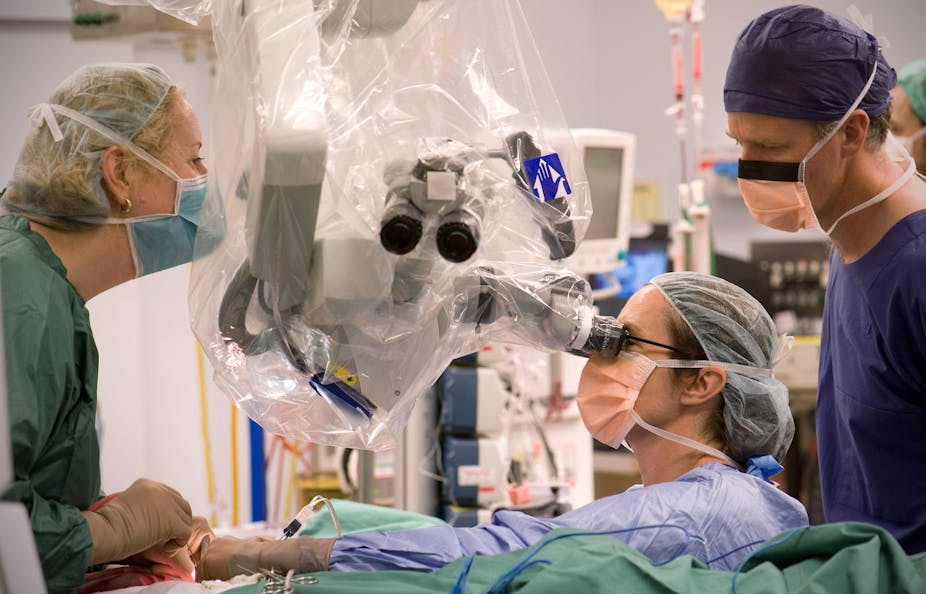Spending on health is the most rapidly expanding part of federal and state budgets, driven by chronic diseases, an ageing population and unrealistic expectations.
The $100 billion spent this year on health will grow to over $200 billion by 2020, consuming around 17% of gross domestic product (GDP).
So why the rapid increase in costs? Technology. New imaging techniques and new treatments that sometimes add to rather than replace old and well-tried technologies.
Health professions are captive, to a certain extent, to industry. The so-called medical-industrial complex. Remember Eisenhower and the military-industrial complex of the 1960s.
The other factor is a failure of governments and the health professions to redress the under-funding of primary health care while pouring ever more money into hospital.
More beds, cry the doctors – as though that is all we need to fix the problem.
Nary a reference to the Productivity Commission’s 2006 report that presented data suggesting many public hospitals were 15% to 20% inefficient.
Even a 10% efficiency gain across the health system would deliver over $10 billion a year. The future lies in doing all we can do to keep people out of hospital – improving funding for primary care, providing incentives for individuals to look after themselves and exploring new models of care by current and new types of health professionals.
But a very important driver to this massive cost is how we provide incentives (read renumeration) for health professionals.
Uncapped fee for service - you do something and you get reimbursed - system is producing significant inequities in the system. And remember it has until recently only been available to the medical profession.
It is made far worse because the fee is structured towards procedures – an operation, an endoscopy – rather than rewarding a thoughtful consultation.
The latter is the best investigation there is in medicine. It’s taking a history and doing a full physical examination, and perhaps avoiding that operation or other expensive test.
It’s really not surprising we have difficulty in attracting young medical graduates to become general practitioners or general physicians.
The income gap across the medical profession is at least a factor of 10 - between $250,000 to $2.5 million. It is funded by us though Medicare and personal payments.
This is of course where the other inequity comes in – patients are finding it increasingly difficult to find these extra payments.
Interestingly, many countries don’t have these wide salary differentials across the medical profession. Holland used to but reorganised its payment system some years ago to ‘equalise’ many of these payment anomalies, so we know it can be done.
As we move forward to look at how to maintain the excellent standards of the health system we have, we are going to have to engage in a genuine and open conversation about the incentives we provide for health professionals.
Otherwise, we will lose access and equity in our health care system. And we will all be the losers.
Should we abandon fee-for-service to promote better healthcare?
Have you had negative experiences with six-minute medicine?

